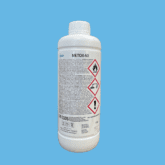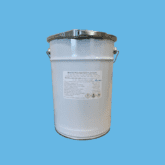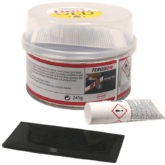Description
Coloured Gelcoat to RAL 840 Colours – Available in 0.5kg/ 1kg/ 2.5kg/ 5kgs/ 20kgs. Please phone 00353 1 466 3786 for availability and price. Please contact the office on 01 466 3786 if you require coloured Gelcoat.
Polynt Polycor Gelcoat (Clear) is a high quality, Lloyd’s Approved, isophthalic polyester gelcoat. This brush gelcoat is easy to use with highly controlled thixotropic properties which provide high resistance to sagging. This product has superior gloss retention and resistance to yellowing over time. Available in a variety of RAL 840 colours. Please contact +353 1 466 3786 for availability and price.
Polyester Gelcoat is used to create the resin-rich layer in contact mould making. It is painted onto the surface of moulds/plugs that have been coated with a thin layer of release agent and sets with a tacky surface on the exposed side. Resin and fibreglass reinforcement are typically applied to the tacky surface, while the mould facing surface forms the hard, smooth, shiny surface of the finished article.
Please Note: Catalyst/Hardener (not included) must also be added to the gelcoat in order for it to cure. For General Health Information see section on hazards.
Working with Polynt Polycor Gelcoat
Polycor gelcoat should be conditioned to a temperature of 15-25 ⁰C before use. Workshop & mould temperature should also be above 15⁰C but lower than 25ºC, as it will cure too quickly. Gently agitate the gelcoat before use and allow to stand for a short period of time to regain thixotropy. Polycor gelcoat is intended for brush application and has been specifically formulated to exhibit the correct resistance to drag on the brush, release air and level correctly.
Non-Sagging
Brush grades should be applied at a covering rate of 500 to 550 g per sq.m. When properly applied, brush grades typically do not sag. The gelcoat will not entrap air (porosity) when applied as per instructions.
Mixing Catalyst
All gelcoats require the addition of catalyst (hardener) to initiate the curing process. The quantity of catalyst is worked out as a percentage of the weight of the gelcoat (e.g. 2% of 1kg gelcoat = 20gm catalyst). Dispensers or weighing scales are advised for accuracy. Temperature plays a large role in the curing process – the higher the temperature, the faster the cure. As a general guide, 1.8% catalyst addition at 25ºC gives approximately a 8-13 minute pot life. Thorough mixing of catalyst into gelcoat is very important. Stir thoroughly using a mixing stick to scrape any uncatalysed gelcoat from the inner walls and base of the container. The hardening process begins immediately, so only add catalyst to a working quantity. Once catalysed, the gelcoat gradually cures, taking on a jelly-like consistency in about 10-20 minutes before becoming hard in about 45-80 minutes at room temperature (about 20ºC). The curing process generates heat within the gelcoat. Too much catalyst or large volumes of gelcoat increases this heat. Over catalysing the gelcoat (>3%) can cause the material to overheat and sometimes cause a fire.
Applying the Laminate
- Mix the product slowly but thoroughly for 10 minutes prior to each shift start up.
- Apply the correct film thickness. A wet film thickness between 300 to 600µm is required ideally working with a brush to ensure a level even thickness of 500 micron.
- Check that the correct level of MEKP is added. A level of 1,8% is recommended. Do not use more than 3% or lower than 1,2% MEKP catalyst.
- Minimum application temperature : 15°C
Hazard Statement – Polynt Polycor Gelcoat (Clear)
Danger
H315 – Causes skin irritation
H317 – May cause an allergic skin reaction
H319 – Causes serious eye irritation
H335 – May cause respiratory irritation
H361d – Suspected of damaging the unborn child
H372 – Causes damage to organs through prolonged or repeated exposure if inhaled
H412 – Harmful to aquatic life with long lasting effects













